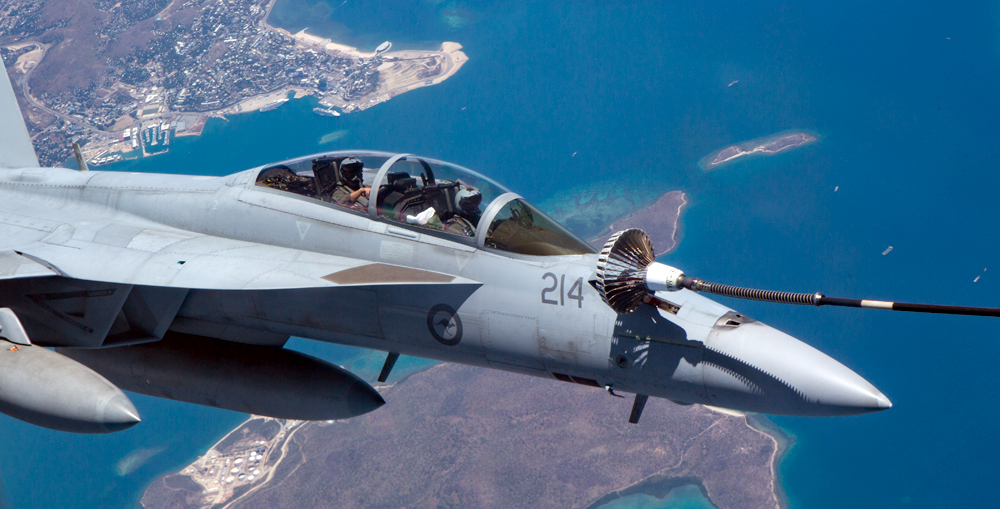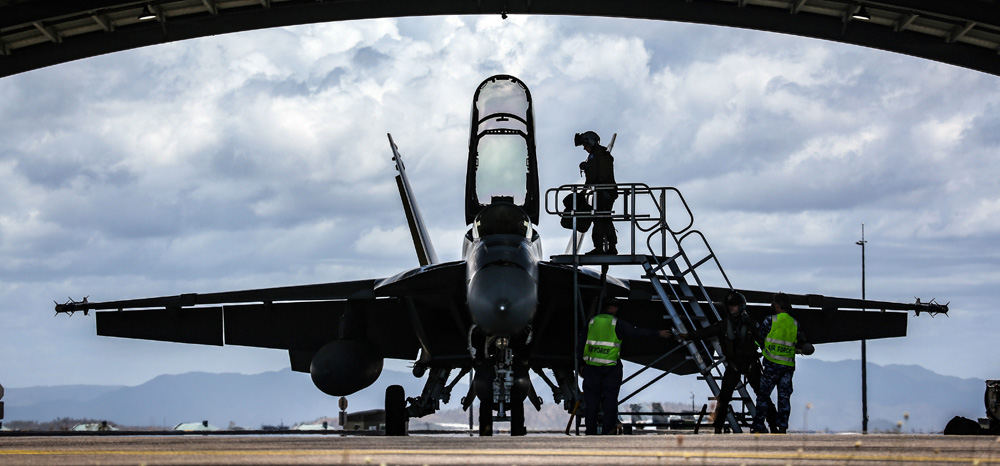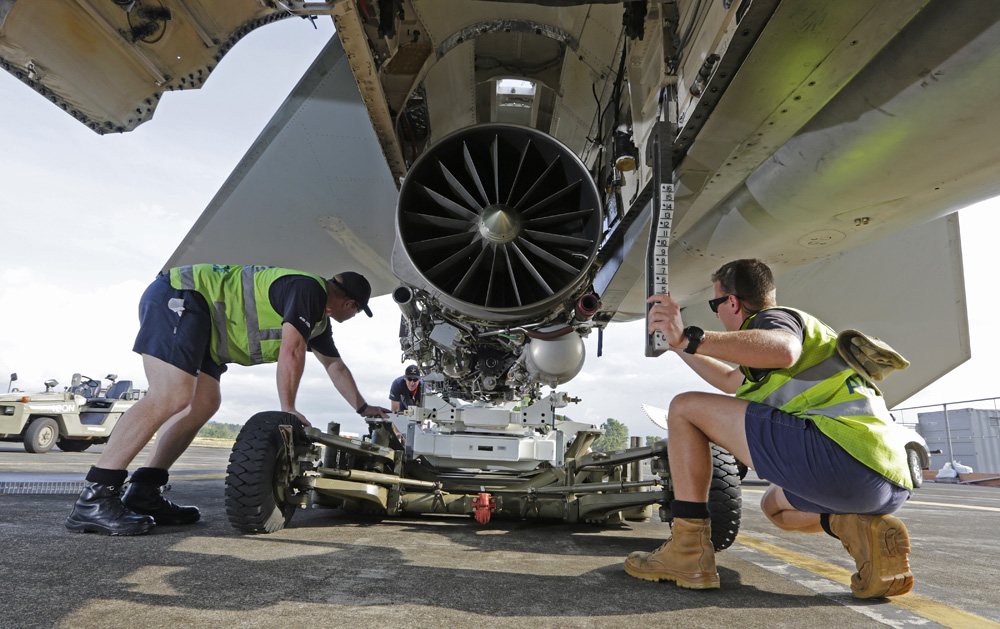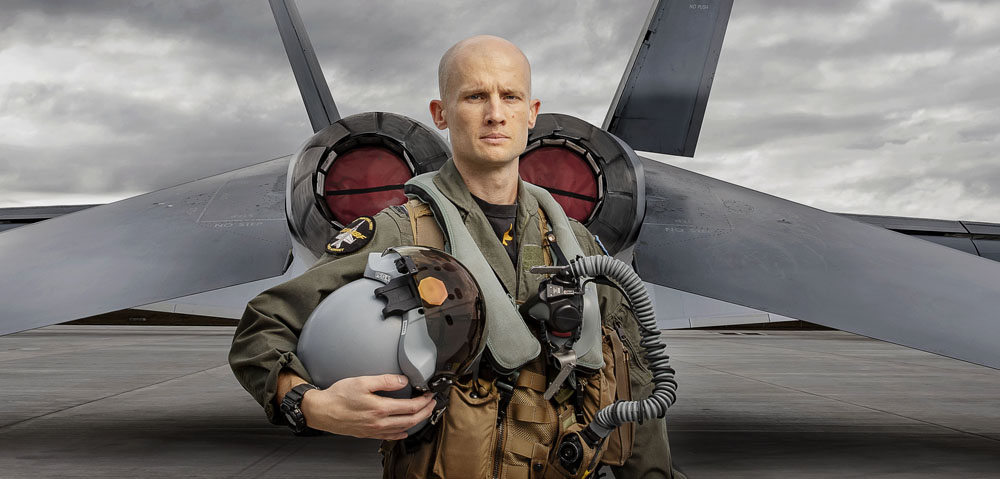Do you think you have what it takes to take the controls inside the cockpit of a multi-million dollar fast jet in the defence on of your country?
Having to make split second decisions that could affect the lives of many?
F/A-18F Super Hornet pilot Flight Lieutenant Tom from No. 1 Squadron RAAF Base Amberley, certainly does but he said it is not something that can be learned overnight.
“You do a lot of training, it’s very thorough,” he said.
“You take baby steps, start out on smaller aircraft, working your way up.
“You know after that whether you are going to survive in that world or not, you have to have ultimate confidence in yourself.”
In the beginning
FLTLT Tom has a vivid memory of playing at the beach when he was four or five.
When little Tom’s eye’s locked on the target, he was blown away.
A fast jet flew low over the beach and was gone in a second.
Tom watched as the black dot disappear into the distance with the sound of it still ringing in his ears.
Though it may have faded from sight, it left a big impression on young Tom who knew there and then what he wanted to do.
“Ever since that first moment when I figured out there were fast jets, I wanted to be a pilot,” he said.
Tom started out in the UK before moving to Australia and joining the Royal Australian Air Force in 2013.

A Royal Australian Air Force F/A-18F Super Hornet is refuelled above Port Moresby. Image: Defence
Your mission should you choose to accept
A mission will be scheduled and flight plan assigned.
The brief will establish the objectives, delegate responsibilities, evaluate threats, and check contingency and communication plans.
“There are usually some complicated things to get your head around,” FLTLT Tom said.
“If you are leading the brief, there is even more mental preparation that takes place before the pre-mission briefing.
“The brief is the time to find out all the answers to anything that might happen.”
You might think with the millions of dollars’ worth of tech available in the military that their brief might take place on a screen reminiscent of the Mission Impossible movies, but there is no self-destructing tech here.
It is the humble white board which takes centre stage and FLTLT Tom said there is a real art to it.
“There is a definite amount of pride in drawing up the briefing board and a lot of attention goes into the details,” he said.
“You are trying to impart knowledge in a short amount of time.
“I’m not saying mine is the best, but it’s pretty good.”
FLTLT Tom flies with a Weapons System Officer who conducts their mission from the back seat of the fast jet.
“More often than not the WSO will lead part of the mission,” he said.
“If, for example, it’s a ground target then the WSO will be looking at the acquisition, bomb effects, egress etc.
“Once our briefing is finished we speak with our authorising officer who then signs off.”

F/A-18F Super Hornet is prepared for flight. Image: Defence
Mission ready
Time to get ready, the team get into their air crew life support equipment.
First it’s time to get on the fire retardant G-suit which has bladders built in that connect to the plane to inflate with air to pressurise your body which helps to keep the blood pressure up in the head, helping the wearer to stay conscious.
Next is the combat survival vest which has plenty of pockets for things like smoke flares, water, infrared torch with night vision capability and a radio.
Lastly the helmet goes on which includes a Helmet Mounted Display and when the pilot gets in the plane the breathing apparatus gets clipped on to the helmet. The helmet also has customised ear moulded, noise reducing earplugs to make sure the operators have crisp comms.
Don’t forget to sign out the plane
“The last thing I do before I walk on to the flight line is sign for the jet,” FLTLT Tom said.
About 40 minutes before take-off the team walk out on to the tarmac.
“We walk out to the jet and do a walk around, make sure everything is as it’s meant to be,” he said.
“After everything is checked we step up into the jet which is normally about half an hour before take-off.
“I do some documentation, check the ejection seat is ready to go then start the engines.
“After checking all the systems are up and running and online, the real work starts.”
Making the world a better place
“I’ve been living in Ipswich for three and a half years,” FLTLT Tom said.
“I love flying near Flinders Peak, we fly quite close to that on return to base and it’s a great bush walk too.”
FLTLT Tom said one of the highlights of his career was his first deployment as part of Operation Okra in 2017.
“It was Christmas time and we were helping to liberate the Iraqi people from the scourge of ISIS,” he said.
“I felt like we made a tangible difference there.
“I was also lucky enough to fly the jets back to Australia afterwards, which took five days.
“I remember looking across this tiny airstrip in the middle of the Indian ocean at our six jets, two air refuelers (also from RAAF Base Amberley), a C-17 transport aircraft and a Hercules and feeling a lot of pride thinking ‘this is a lot of awesome air power that you project across the world’.”
FLTLT Tom also recently ran 172 kilometres in 24 hours at RAAF Base Amberley to raise funds for the UNICEF coronavirus appeal. You can still donate here.

About the Aircraft
The F/A-18F Super Hornet is larger than the F/A-18A/B Hornet. The aircraft’s increased wing area allows it to carry more stores (mounted devices) on its additional hardpoints.
The twin seat F/A-18F Super Hornet can undertake:
- air interception;
- air combat;
- close air support of ground troops; and
- interception of enemy supply lines including shipping.
The crew are the pilot and air combat officer and the plane can take off with a maximum weight of 29,900kg.
The two engines provide a thrust of 9,800kg thrust each.
This Super Hornet has a ceiling of 50,000feet and a range of 2.700km.
It can also carry and fire an array of weapons including air-to-air missiles, laser-guided bombs and a 20mm cannon.



What a great addition to Australian Defence you are
Flt Lt Tom. I’m sure your family are (rightly) proud of you and of course your team. Thank you.
And my thanks go to the writer of this article. Well done.